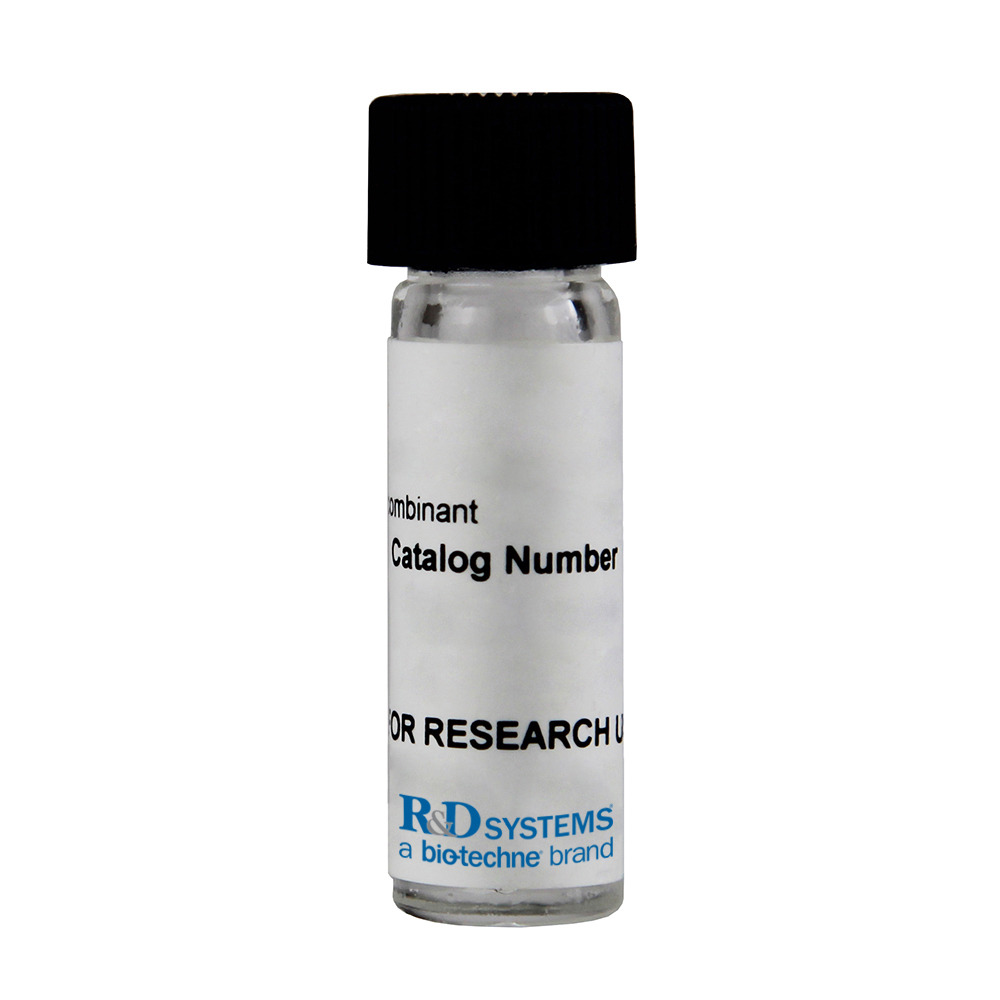

 下载产品说明书
下载产品说明书 下载SDS
下载SDS 用小程序,查商品更便捷
用小程序,查商品更便捷



 收藏
收藏
 对比
对比 咨询
咨询Carrier Free
CF stands for Carrier Free (CF). We typically add Bovine Serum Albumin (BSA) as a carrier protein to our recombinant proteins. Adding a carrier protein enhances protein stability, increases shelf-life, and allows the recombinant protein to be stored at a more dilute concentration. The carrier free version does not contain BSA.
In general, we advise purchasing the recombinant protein with BSA for use in cell or tissue culture, or as an ELISA standard. In contrast, the carrier free protein is recommended for applications, in which the presence of BSA could interfere.
9154-GT
| Formulation | Supplied as a 0.2 μm filtered solution in Tris and NaCl. |
| Shipping | The product is shipped with polar packs. Upon receipt, store it immediately at the temperature recommended below. |
| Stability & Storage: | Use a manual defrost freezer and avoid repeated freeze-thaw cycles.
|
Recombinant Human ST6GALNAC1 Protein Summary
Learn more about Fluorescent Glycan Labeling and DetectionProduct Specifications
Lys36-Asn600, with a C-terminal 6-His tag
Analysis

Background: ST6 Sialyltransferase 1/ST6GALNAC1
Sialic acid molecules attached to glycoproteins or glycosphingolipids play important roles in various biological processes such as immune recognition, pathogen infection, and cell adhesion. Sialyltransferases are key enzymes that regulate the serum levels of sialic acid‑containing molecules. Alpha‑N‑acetylgalactosaminide alpha ‑2,6‑sialyltransferase 1, or ST6GALNAC1, is a type II membrane protein localized in the Golgi network and catalyzes 2,6‑sialylation of the Tn antigen (GalNAc‑O‑Ser/Thr) (1, 2). Sialyl‑Tn antigen is highly expressed in several human carcinomas and is associated with carcinoma aggressiveness and poor prognosis (3). Breast cancer cells transfected with ST6GALNAC1 synthesized the sialyl‑Tn antigen structure (4). The enzyme may also be used to synthesize a cancer vaccine (5). The activity of this enzyme has been measured using a phosphatase‑coupled assay (6).
- Ikehara, Y, et al. (1999) Glycobiology 9:1213.
- Sewell, R. et al. (2006) J. Biol. Chem. 281:3586.
- Lima, L. et al. (2013) Br. J. Cancer 109:2106.
- Julien, S. et al. (2001) Glycoconj. J. 18:883.
- Julien, S. et al. (2009) Br. J. Cancer. 100:1746.
- Wu, Z.L. et al. (2011) Glycobiology 21:727.








 危险品化学品经营许可证(不带存储) 许可证编号:沪(杨)应急管危经许[2022]202944(QY)
危险品化学品经营许可证(不带存储) 许可证编号:沪(杨)应急管危经许[2022]202944(QY)  营业执照(三证合一)
营业执照(三证合一)